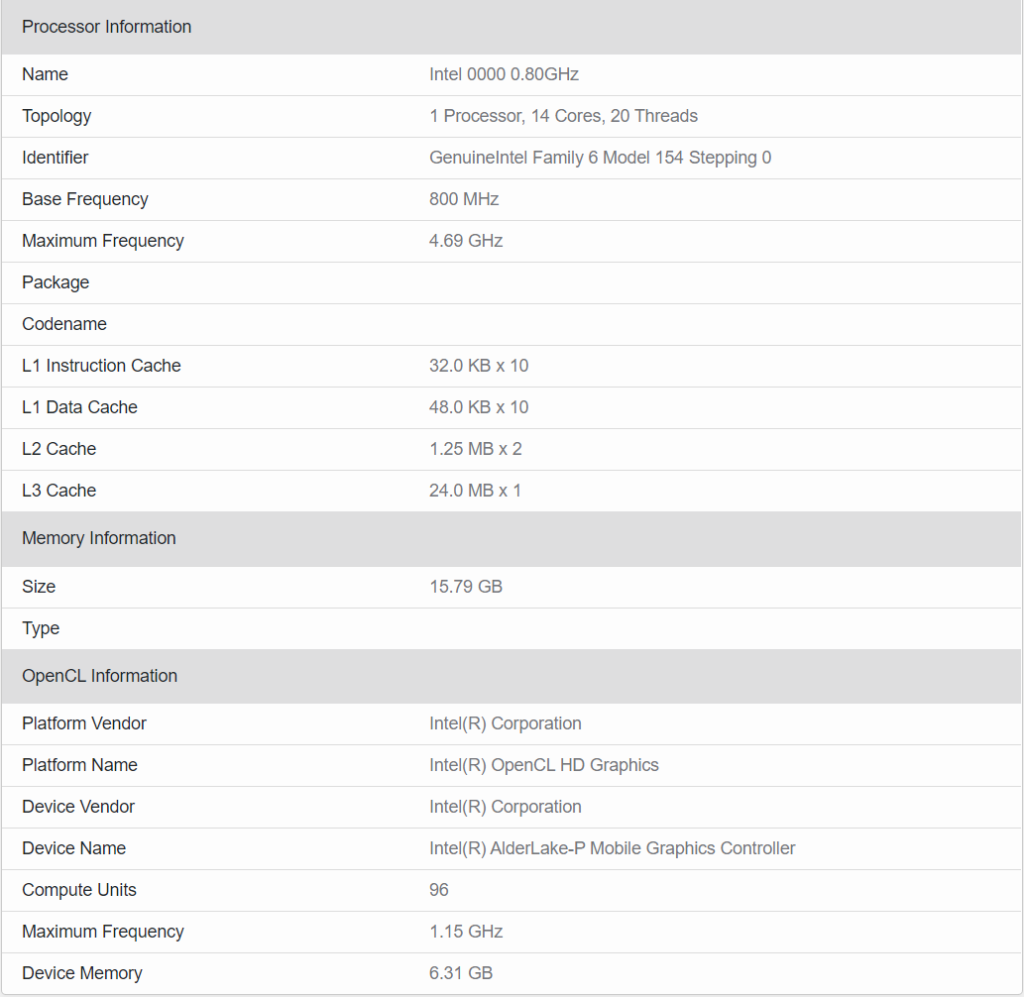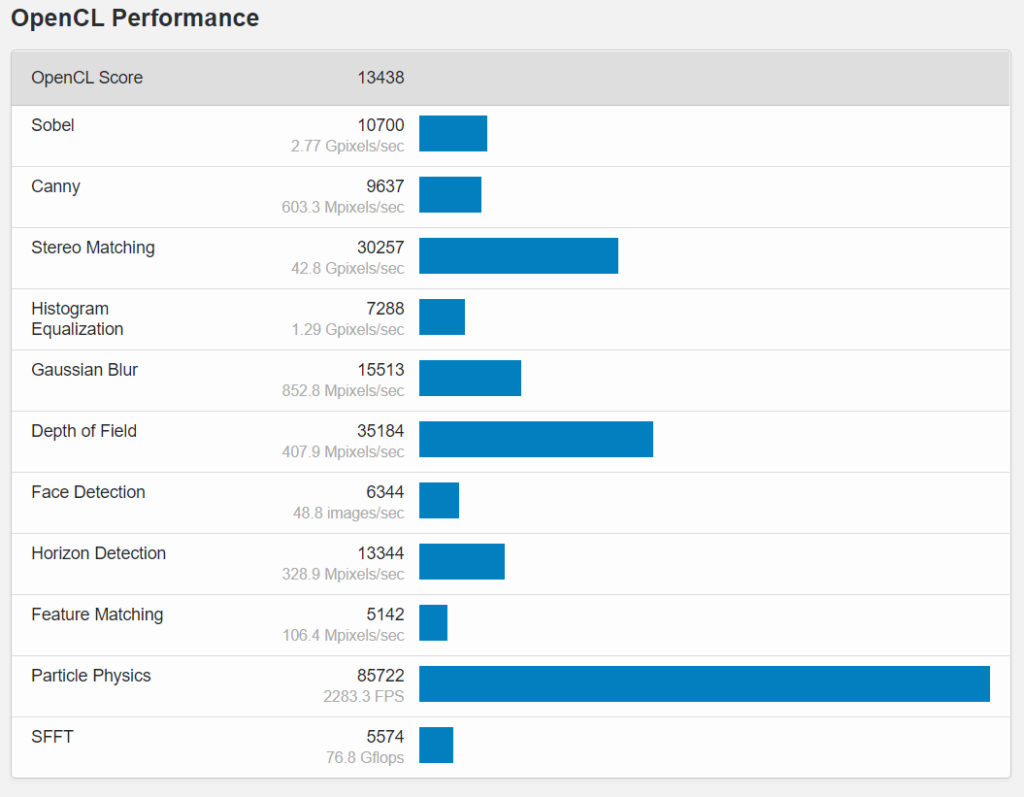All Intel’s Tiger Lake CPUs may not be out yet, but Intel is apparently in the wild with pre-release mobile Alder Lake CPUs. In Geekbench 5, A 14 core mobile Alder Lake chip was spotted flexing its iGP in the OpenCL benchmark.
The architecture will be Intel’s successor to the forthcoming 11th Gen Rocket Lake and Tiger Lake (desktop/mobile) architectures. What makes Alder Lake so fascinating is its groundbreaking new design in implementing a hybrid core architecture containing smaller “power-saver” cores and larger output cores. The approach is similar to the big.LITTLE architecture of ARMs used in ARM-based processors from Apple, Samsung, and Qualcomm, which also use performance cores and power-saver cores.
This is why the Alder Lake chip is shown by Geekbench 5 as having an odd 14 core/20 thread configuration. We think that the power-saver cores lack hyperthreading, so that would indicate the Alder Lake chip has a standard Hexa-core architecture for the performance cores, then eight extra power saver cores.
Unfortunately, we don’t get an idea as to how cores would behave in Geekbench, however, we get an idea of how its Intel Xe IGP would be able to do. In Geebench 5’s OpenCL test, the chip’s Xe graphics earned 13438 points. For comparison, that’s about GTX 660 Ti performance, or comparable to AMD’s Vega 11 graphics found in processors like the 3400G for a more modern comparison.
The score is quite underwhelming, as current Xe integrated graphics chips are able to overpower AMD’s Vega iGPs very quickly. Yet this is a prototype, so it is bound to change. Plus, for real-world results, Geekbench 5 isn’t exactly a great benchmark.
Anyway, watching a mobile Alder Lake chip in action is cool. This architecture is a drastic shift from anything created over the past decade by Intel. Seeing how many power-saver cores will support traditional desktops and notebooks in the near future will be really fascinating.




1 Comment
Pingback: In the leaked benchmark, Intel’s 12th-gen Alder Lake hits unbelievable frame rates - Craffic